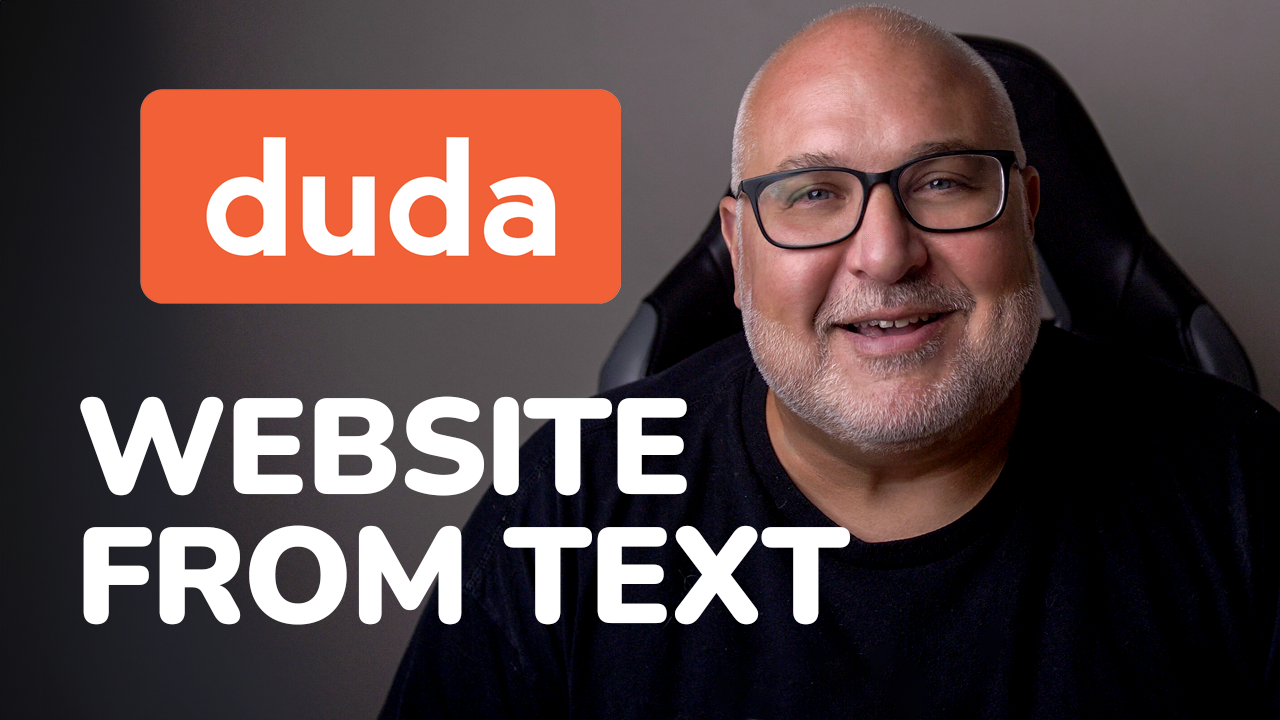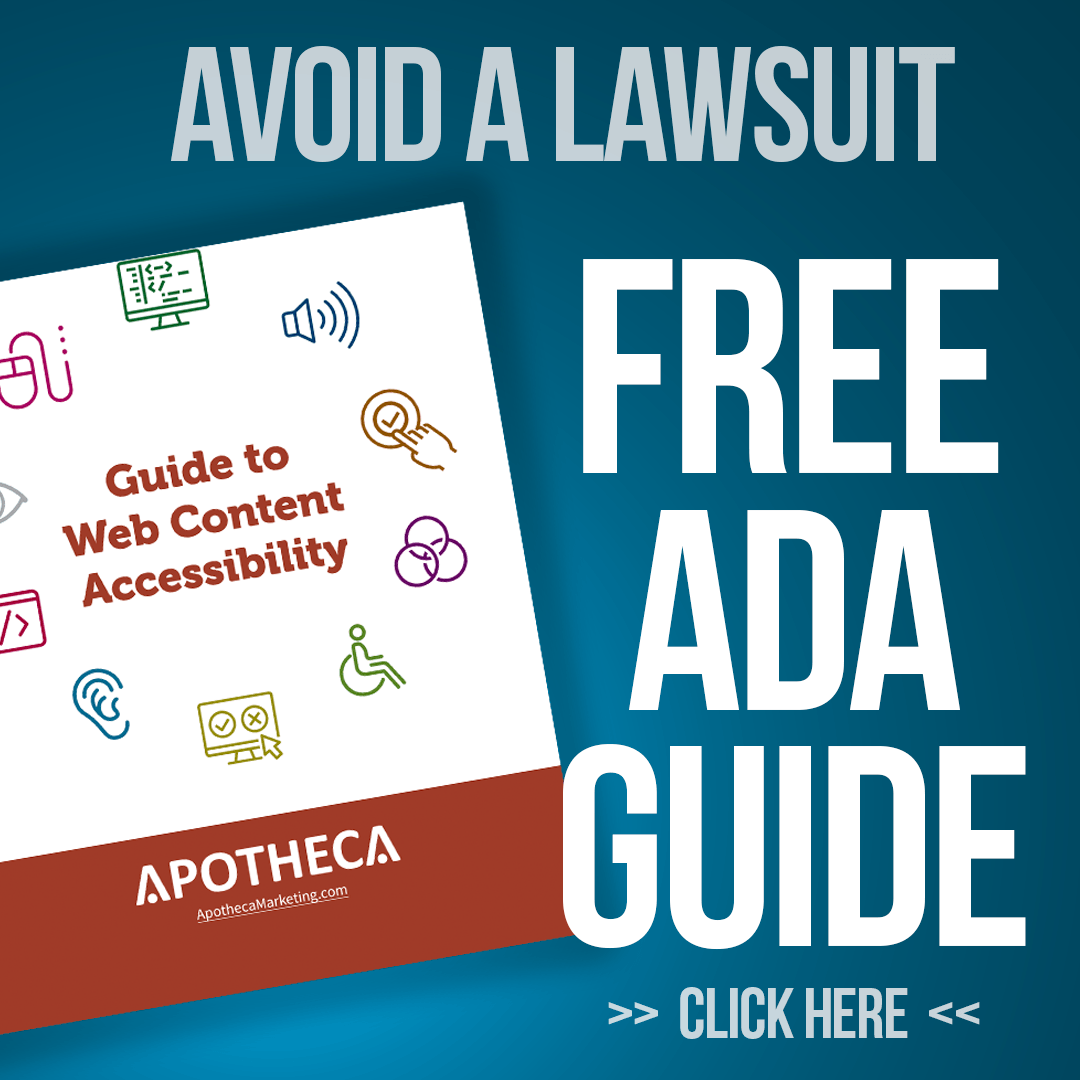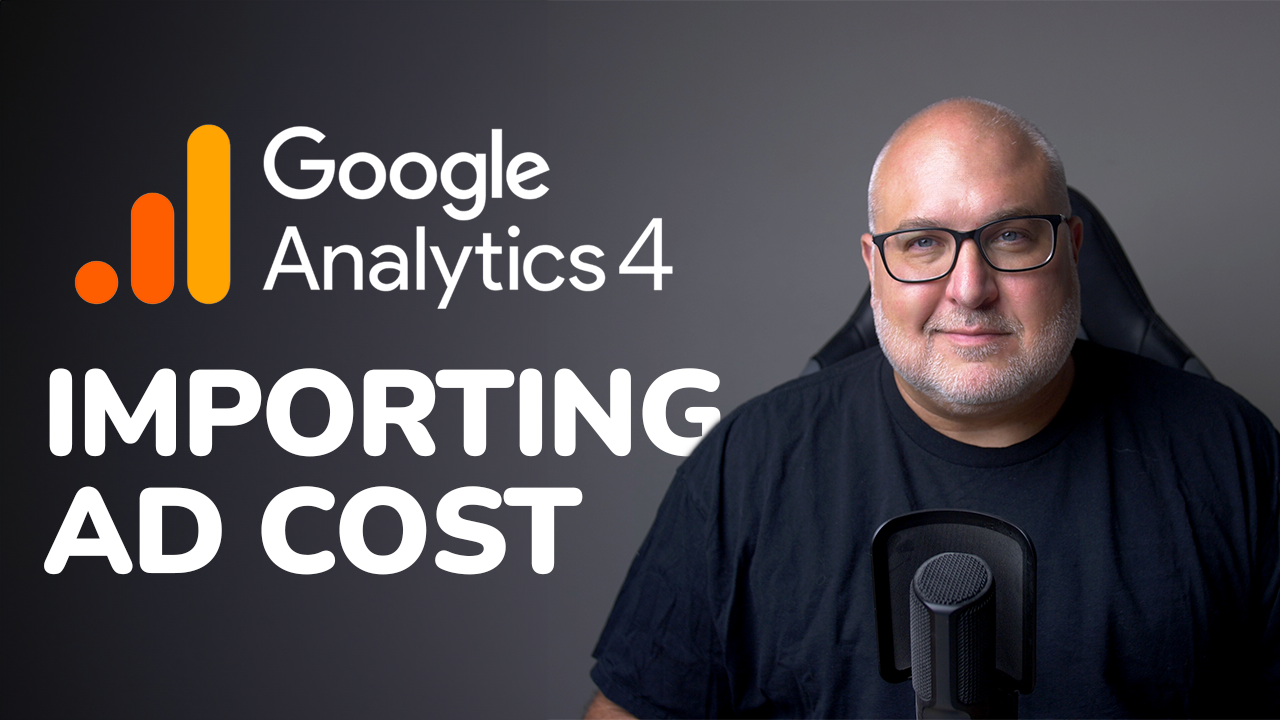Don't Make These PPC Mistakes!
Roy Bielewicz
Get better results from your paid search marketing campaigns!
Paid search (PPC) can be an incredibly effective marketing channel, but it can also drain your budget while producing few conversions if done incorrectly. Roy from Apotheca Marketing looks as some of the most common issues with PPC that we see with our clients.
Have you tried paid search and felt like it just didn't work for you or your company? We're going to look at some of the top reasons paid search might not be working for you and what you can do to solve it.
Keyword Dumping & Account Structure
One of the things that we find with many paid search programs that we look at is what we call keyword dumping and what that means is that the account isn't structured correctly.
Accounts are based on campaigns, ad groups, and then the ads and keywords under that ad group. The campaigns allow you to target very specific things; whether it's demographics or segments or geography. Taking advantage of that is obviously the first good step to structuring your account. Make sure that it's targeting the right people, that if you sell products, for instance, and only in the U.S. that you're looking at only U.S. people. Or if you target nationally or internationally, to expand the targeting for that. If you do just geography-related sales, maybe just in Florida, then make sure that your ad campaigns are targeting just that area.
Within those campaigns are then ad groups and what we find is that a lot of people will take an ad group and dump a bunch of keywords in it for one ad and one landing page. That ad has a specific landing page, those keywords can have specific landing pages as well, but we find that a lot of people don't take advantage of that.
What they do is dump a bunch of keywords that may or may not be relevant. It could be because of suggestions from Google, as it was setting up the account. It could be random keywords that they threw in that might work. You'll have a lot of keywords in that account that are not specific to the landing page that they're going to or the ad content in that ad.
We had one client that had several thousand keywords in one ad group and those keywords were all over the board. What that does is, it lowers the quality score of the ad and makes it more expensive when people click through on it.
Better targeting for those ad group-level ads is going to improve the performance of your account. It's going to lower the cost per click and it's going to make sure that people are landing on a relevant landing page for the keywords that you're bidding on.
Negative Keywords
The other thing that we find that people often overlook is negative keywords. If you sell something that may be commonly confused with another product, or if it says you're bidding on a brand term, and there are other companies that use that brand, but maybe in conjunction with a different name (parts of a name or something like that), making sure that you're bidding on those negative keywords will tell Google that when people are connecting this specific search, not to show my ad.
That's important so that you're not spending money or getting impressions or getting clicks from keywords that really aren't relevant to you; seeing what people are actually searching for, are they clicking on your ads, and making sure to add those negative keywords will keep those unnecessary clicks, unnecessary cost from impacting your campaign.
Use Keywords in Ad Copy & Landing Page
We touched on it a little bit briefly, but the other thing to make sure that you're doing is that your ad copy, the words in your ad and the text you're using and your headlines and the body of your ad, they're reflecting the keywords that you're bidding on. It goes back to the idea of having more discreet ad campaigns or ad groups. That the ad groups then reflect the keywords that you're bidding on for that specific ad.
If somebody searches for a specific keyword, they see it in your headline, they see it in your body copy, and then they also see it on your landing page. It's going to tell them that that is a relevant ad, that they're in the right spot, that this is related to them. It also tells Google the same thing; if Google thinks that this is more relevant to the search that's taking place, they're more likely to show your ad and they're more likely to improve your quality score. This means that you're going to pay less per click for that ad or something that was less relevant and they're not going to charge you more for it.
Using Targeting
By making sure that you're reiterating those common keywords, it's going to impact both the user experience as well as your cost. I mentioned it in the campaign structure, but one of the things that a lot of people overlook is targeting those campaigns. Making sure that that campaign is being targeted to the right location, to the right people, and taking advantage of some of those targeting tools that come with Google.
For instance, you can look at, depending on the type of ad that you're running, you can look at income, you can look at gender, you can look at all sorts of different demographic and geographic, details that are going to more likely target your audience.
Customer Files
You can also upload or segment in Google Analytics. You can create segments; for instance, existing customers and people who've purchased on your site before. By giving Google that information like, “Hey, this is a group of people that we're interested in.” They're going to model that to say these are other people that are like the people that purchased on your site. We're going to serve that ad up for them.
Again, you may get fewer clicks and you may have a smaller audience, but your ads are going to be more effective and they're probably going to convert better; if you can convert better and keep your costs low, then you have a more profitable program.
Landing Pages
A lot of times people will completely forget about the landing page that they're sending people to. The last thing you want to do is just send everybody to your homepage, particularly if it's a longer tail or a product-specific keyword. If you are targeting a specific thing that people are looking for and you're just dumping them on your homepage, that may or may not be relevant to what they're looking for, you're going to make them have to navigate so odds are, they're going to leave your site. That's going to cost you more because they're clicking and they're landing on your homepage. They're not going to click through and search for what they were already searching for on Google. They're going to leave, which has cost you money.
Make sure that your ads and even down to the keyword level are specifically targeting the landing page that you want them to land on and that the landing page is a high-quality experience and reflects the keywords that they were searching for. The more likely the more keywords that were in the ad are in their search relevant to that landing page. Again goes to your quality score. It also goes to reaffirm to the customer that this is supposed to be worth landing on.
Google Ads Conversion Tracking
Another important thing that a lot of people overlook because it can get a little complex, is setting up conversion tracking correctly in your Google Ads account. Google has an ability to put pixels on your site that will understand if people are converting and whether that's a purchase or whether it's a lead form or a download.
If you've identified that as the conversion that you are looking for, for this particular campaign, then you can make sure that Google is seeing that information. Why is that important? Because Google then takes that information, it knows to report on it and you're reporting, so you can see conversions but it's going to look at the people that are converting. It's going to say that these people, this target audience, this segment is likely to convert so let's serve this ad up to more of those people. Google's going to optimize serving your ad to those converting metrics. The more information it has to do that, the more likely you are to get a better-performing ad campaign.
Now leaving out conversion tracking, you absolutely can run ads doing that.
You can also say, “Hey, I'm just interested in clicks to the site. We just want to drive traffic or we just want to build brand.” and that's okay but it may cost you more money. If your end goal is that conversion and driving either leads or sales then you want to make sure that the conversing tracking is turned on. It can be a little complex and there's a whole process that you can do, we recommend doing it through tag manager, but it will actually tell you whether those conversion events are tracking correctly.
It is definitely worth setting up.
Panic Budgeting and Pausing
One of the things that you're going to want to avoid with any campaign that you're running is what we call panic budgeting. Whenever you start a new campaign or turn on a new ad group or add keywords or make any adjustments or changes, major changes to your campaign, Google goes into a learning phase. For instance, if you double your budget on a certain ad group or campaign, it sends Google back into a learning phase.
It has to then relearn, what is the right audience? Who are the right people to see this ad? How often should it serve it up? All of the stuff that goes into its AI. If it's a new campaign or if it's something that you just made a major change to it can take 48 hours or more, depending on the traffic to those keywords and those ads, for Google to start relearning.
What happens is people will start a new campaign and within a couple of days, they're freaking out because they're not seeing conversions. They're spending all this money and nobody's buying.
It takes time for people to buy. That is one thing that we always tell people, depending on the product that you're selling, there is a learning curve. There is there's a purchase curve where it may take several weeks or a handful of visits or more to your site before they're comfortable buying from you or before they've gone through the shopping process.
Again, if you're selling mortgages, for instance, it may take them six months before they make a decision. If you're selling pens, they're probably going to make that decision that day and there's going to be a shorter consideration curve. Keep that in mind, depending on your product that it's going to take time from when they start seeing your ads to when they start buying. Likewise, it's going to take Google some time to figure out the right audience for your ad too.
The last thing you want to be doing is going in panicking and adjusting those bids, either lowering them or pausing your ads because what happens is it sends Google back into relearning. So now, because you were panicking, it's going to then take even longer for Google to understand where it should be serving up those ads.
It's okay to be concerned. It's okay to watch your data, but we always encourage people to wait a week or two. Before making any real decisions about what their budgets are or anything else on their ads until they start to let Google learn and start to see the actual data come through.
The last thing you want to do is make changes to your ads because you're, you are feeling like they're not working. Let the data make those decisions for you. Give it time to do at least a full week before you start making dramatic changes to your ads.
Marketing Attribution
The other thing we see that sometimes leads people to believe that their ads aren't working is they're depending only on last-click attribution models. We've talked about this in other videos, but the attribution model is essentially how Google credits your ad for the sale, lead, or conversion. The default for Google Ads and for historically, for Google Universal Analytics, was last click. Whatever ad got the last click, got the credit for that sale; it didn't matter what other campaigns they clicked on, it didn't matter if they clicked on organic search and then clicked on a paid ad, whatever was the last click got the campaign credit and got the sale credit.
That's not always accurate because you're not giving credit to those other touch points that customers had. Whether that's organic, whether it's another ad, whether it's an email, whatever combination of things that people used to get to your site to finally make that sale by only giving credit to the last click, you're not seeing that entire journey and you're not giving it the correct credit for it.
What we encourage you to do is look at last click, but also look at Google's data driven model and that is the new default in GA 4. Take a look at that and you can actually look at the attribution reporting in GA 4 and compare those side by side. You can look at the data driven model along with last click and see how it changes the credit that's coming into your ads.
We've seen this on many campaigns where it looks like a campaign has driven no sales based on last click when in fact it's driving quite a bit of sales if you look at the data driven model. What that means is that it was actually part of that process, it was part of the journey that the customer took. They interacted with your ads, s those ads should be getting credit for informing them and keeping them coming back to your site. If you look at both models side by side, you can get a better idea of whether your campaigns are working or not.
Measuring ROAS and ROI
Last but not least is really understanding how you make that decision about whether your program is working or not. That means understanding really what things like ROAS and ROI are; ROAS is the return on ad spend and ROI is the return on investment. Different agencies and different companies will have various definitions for that but essentially you're looking at ROAS for how much did you spend on the ad and how much revenue did it bring in.
For companies that aren't retail companies, it's how much value was behind a certain lead or action; whether somebody signs up for an email or they download something or they fill out a form, they're capturing that customer is worth something to you. Both in Google Ads and Google Analytics, you can assign a value to that. You can say, “Hey, this typical lead is worth $50 or $100 because of the eventual business we'll get from them.”
Looking at what your ad spend is and then understanding what revenue it's generating is that ROAS model.
Where that falls down a little bit is that people aren't taking into consideration product cost or service cost. You may have, for instance, an ad group that, you know, cost you $10 and you generated $15, but how much did your product cost? If you sold a product, for instance, that only has a 20% margin, you may have lost money on that ad. While ROAS looks like it's positive, the actual return on your investment, when you factor in product or service costs may actually not be profitable.
Make sure that you have a good understanding of what those margins are so you can calculate that into your view of whether a program is profitable or not.
Don't just look at, “Hey, we got X percentage more revenue than we spent.” Again, that doesn't give you the entire picture of whether something's profitable or not. Look at the lifetime value of a customer, maybe you lost money on that initial sale, but if people tend to repeat buy from you, then it was worth acquiring that customer. You can look at acquisition costs and the lifetime value of a customer.
Those are all metrics that you should be looking at or talking to your agency or talking to your analytics team about factoring into understanding whether these programs are profitable for you or not. Again, it may have actually lost you money, the ROAS may not be great but if you acquired that customer and lifetime values are high, then having a flat or negative ROAS may actually be okay. If they're not, then you're going to want to look at the profit margins based on your product costs and service costs.
There's a lot of data that you should be looking at when you're managing your accounts. Sometimes the best thing to do is to go through your account and conduct regular audits to look at how your account is structured and whether there should be changes.
Conclusion
Google's constantly tweaking and making changes to how their ads are served and how the accounts are structured. It makes sense for you to go in and make sure that those ads are being updated on a regular basis.
Don't just launch them and let them fly then think that they're going to be okay. You want to regularly maintain them, look at how they're performing, go in and adjust as necessary, and sometimes even rebuild entire campaigns if it makes sense for you.
Contact Us





